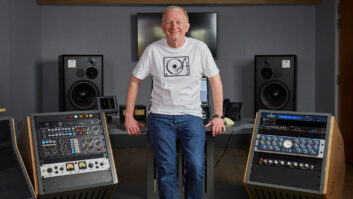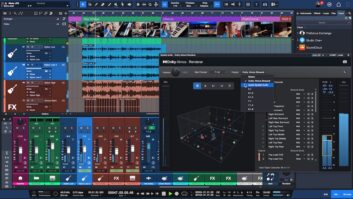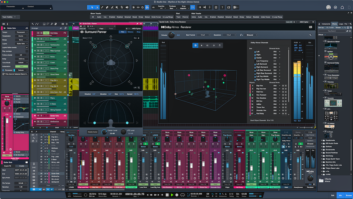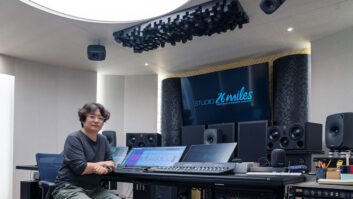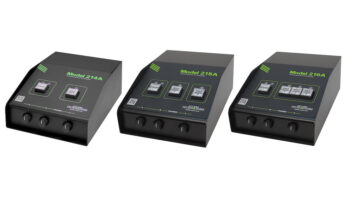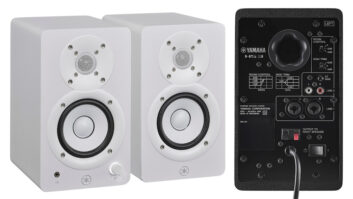Cambridge-based engineer continues to grow his Dangerous Music-equipped studio adding the new Dangerous Compressor—
When asked how Wyner found out about Dangerous Music products, he recalls, “I have known [Dangerous product designer] Chris Muth for many years. I’ve worked for almost 30 years as a mastering engineer, and Chris was occasionally a resource for us dealing with technical issues, or we had occasion to communicate about other things. It was really through Chris’ reputation that I was drawn to the Dangerous Music products when they established the company.”
Mastering engineers evaluate, choose and use audio gear for very specific reasons related to their craft, Wyner explains one of the most import gear tests for his ear, “I suppose the first thing that I would say related to the Dangerous Music Compressor is that mastering engineers are attracted to pristine and excellent components in their signal path, especially when it comes to processing analog audio. The sound of the signal path through the Dangerous Compressor, and the quality of the sound even when you just deploy the gain, is really quite lovely.”
“It’s not what I would call 100-percent transparent,” relays Wyner, “in the sense that you hear there is something there, but what it gives to the signal path has a subtle, kind of ‘euphonic bloom’ if you will, in the mid-range. But it’s really subtle enough so you don’t feel like you’re changing balances or losing depth or detail, it just adds a ‘niceness factor’ if you will. So just right off the bat: the sound of the box, the signal path, is excellent. So that clears hurdle number one for me as a mastering engineer.”
Diving into some specifics on the features of the Dangerous Compressor, Wyner says, “The Side-Chain facility that’s built into the Compressor has been showing up in more and more compression tools, both in the way Dangerous has implemented an internal side-chain filter, or the ability to plug in an external side-chain. It’s not a new concept, but it’s very well implemented in the Dangerous Compressor. Just having that facility integrated and being able to go with their relatively gentle high-pass filter – or something a little bit more specific if that’s what you need – that makes it very convenient.”
Noting some of the other controls, Wyner adds, “The way that the stereo controls are ganged is wonderful and makes a lot of sense. The ability to tweak time constants individually, but maintaining a single gain and threshold control is a neat feature. The detector is so very smooth, it reminds me of the classic compressors we have all come to love. The Auto-Time constants, the attack and release, work very well – of course sometimes you want to turn it off, but I leave it in Auto mode more often with the Dangerous Compressor than I do with other compressors.”
“The Smart Dynamics button is a neat feature where, from my impression, it’s almost like having a very subtle ‘transient designer’ on the top of the dynamic range,” he continues. “So in other words when the compressor is IN it doesn’t feel like the transients are ‘smeared’ in the same way that it does with other compressors. I find it’s really well designed, it’s really easy to use, it sounds great and you can really lay into it and not immediately recognize the signature of the compressor. It retains sonic purity with very little added distortion. The Smart Dynamics feature helps address the level issue in a really great way that let’s me use less of, or even turn off, my digital limiter!”
“At this point the Dangerous Compressor has taken the place of my main compressor, a place to start,” says Wyner about his overall mastering rig and gear choices, “should I need compression – but even without compression I’m often running audio through the Dangerous Compressor and just using it for gain. The ganged output control in stereo mode is genius.”
Even though Wyner is one of the top mastering engineers around, and knows exactly how to tweak a compressor to do exactly what he needs it to, he still says about the new Dangerous Music Compressor, “I appreciate just how easy it is to use…and the design is very attractive!”
Turning to another fairly new and unique piece of Dangerous Music gear in his setup, Wyner offers, “The Dangerous BAX EQ is a device that allows you to mimic the kind of tone controls that consumers find on old-school stand-alone amplifiers, and the shape of the filter – the ‘Baxandall filter’ – is different from what most audio engineers have on their mixing desks. It has a different sound. I’m not sure how many people have ever had the experience of being able to compare what happens when you turn up the treble on your home receiver verses turning up a shelving EQ on a mixing desk, but they sound different, they’ve got a different shape. So having that in the toolkit, something that’s very broad, that has a more gradual slope to the filter, so it’s not sharp – it’s airier – it’s a lovely tool to have.”
“The thing that really sold me on the BAX EQ is the high pass filter. An analog high-pass filter sounds different to me than one that is designed and implemented in DSP. I haven’t found a plug-in high-pass filter that sounds nearly as smooth. I think that the BAX has a high-pass that sounds very transparent for an analog filter. There’s less phase shift and the audio usually survives the path through the filter,” reveals Wyner. “The high-pass filter just sounds great.”
“There’s also a low-pass filter on BAX that has a setting all the way out at 70khz – which is way up above anything that we can necessarily hear – but, as it drops down and touches just the top part of the audible signal, it’s got a nice way of taking out a little bit of harshness, or edginess, that will creep into mixes when somebody is using a lot of signal processing. I’ve never found a Low-Pass filter to be of use in mastering until the BAX EQ. I really like the BAX filters a lot!”
“The Dangerous Liaison is incredibly exciting,” exclaims Wyner. Where some people may think of the Liaison as mainly an analog switching box with patching memory storage, Wyner says, “To have a device that lets you so facilely and easily switch between processors, swap the order of processors, do quick A-B comparisons of signal chains. It makes my work better!”
“I use all of the Liaison‘s facilities, it mates with my Dangerous Master so that I can use one path to feed one input and either do parallel processing or not. And the other path feeds the Dangerous Master’s integrated mid-side (“S&M”) processor. I can take any of my analog boxes and implement them either in parallel processing mode or in mid-side mode,” explains Wyner. The Dangerous Master’s mid-side capabilities allow separate control of the stereo signal in terms of “center and sides” as opposed to just “left and right,” letting the engineer correct problems and enhance the stereo image of the track in ways that are impossible to execute just working in straight L-R stereo.
“It’s just as important as your greatest EQ, to have something to help you do that kind of switching,” he continues about the Liaison. “It’s important in the same way that A-B comparison between processed and unprocessed audio is at the heart of the mastering engineers’ craft. So it’s really exciting! When I first saw the Liaison, I said, ‘I have to have this!’ – it was just the same kind of excitement that I get when I hear a box that does something and you say: ‘Wow! It sounds great!'” [laughs]
Asked if the transparency that a mastering engineer requires in equipment like the Liaison is evident, Wyner agrees, “Absolutely. I don’t notice the Liaison introducing any color whatsoever. It’s virtually noise-free.”
Like the Liaison, the Dangerous Master transfer console is key to Wyner’s mastering setup and the fact that it has a streamlined feature set is fine since it has all the correct ones for mastering. “The basic commentary about the Liaison applies to the Master,” concludes Wyner. “It’s just noise-free, simple, makes life better, it’s really easy to switch things in and out in my analog chain. Plus the Master offers excellent stepped gain on the input and the output as well.” The Master is the most current version of the ‘mastering console’ design that Chris Muth has been making customized versions of for many years, specifically for individual mastering engineers at studios such as Sterling Sound.
Jonathan Wyner has mastered more than 5000 CD’s during the last 25 years spanning every musical idiom. A few selected artists he’s worked with include, Aimee Mann, Apples In Stereo, The Magnetic Fields, The Residents, Steppenwolf, The London Symphony Orchestra, Richard Thompson, Phish, Nirvana, Miles Davis, Laura Nyro, Juliana Hatfield, James Taylor, Dizzy Gillespie, DEVO, David Bowie, Crosby Stills Nash and Young (CSNY), Aerosmith, Chicago, and Bruce Springsteen; and he’s worked with dozens of top record labels, from BMG, EMI, Geffen and A&M to Sub Pop, Sony, Arista, Capitol and Columbia.
Wyner holds an AB in French Horn and Composition from Vassar College, NY and is a professor of music production and engineering at Berklee College of Music in Boston. A recording engineer since 1983, Wyner began a career in Mastering in 1985 when the compact disc format was first released. He studied digital mastering with one of the pioneers in the field for 5 years prior to establishing his own company, M Works Mastering. In 2005 Jonathan received a Grammy nomination for producing a program for Deborah Henson-Conant with orchestra, entitled ‘Invention and Alchemy’ that aired nationally on PBS. Wyner prides himself in the fact that he is among the elite group of mastering engineers to have run the Boston marathon in under 3 hours repeatedly. This year he measured the SPL at the Boston marathon from a runner’s perspective. Talk about loudness wars!
Find out more about mastering engineer Jonathan Wyner at: http://www.m-works.com
About Dangerous Music
Dangerous Music, Inc. designs and builds award-winning hardware products that are indispensable to any DAW-based recording, mixing or mastering environment. The Company pioneered the concept of the dedicated analog summing buss for digital audio workstations with the Dangerous 2-Bus in 2001. Today, Dangerous Music offers a wide range of products for recording, mastering, mixing and post-production facilities, all designed and built with mastering-quality standards and a practical aesthetic. Key products include the Dangerous 2-Bus and 2-Bus LT, Dangerous Monitor ST-SR, Dangerous D-Box, Dangerous Master, Dangerous Liaison, Dangerous Monitor, Dangerous Source, Dangerous BAX EQ, and the Dangerous Compressor.
For more information on Dangerous Music visit http://www.dangerousmusic.com phone 845-202-5100 or email: [email protected]
All trademarks are the property of their respective holders. Description and specifications are subject to change without notice.
